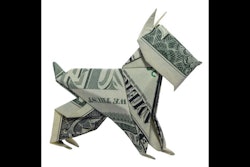
Adapted from a press release:
The pet sector may have contributed US$260.5 billion directly and indirectly to the U.S. economy and accounted for a net contribution to the annual gross domestic product (GDP) of US$174.67 billion in 2021. Shared during the Pet Industry Leadership Summit, data from the study, “The Economics of the U.S. Pet Food and Pet Supply Industry,” demonstrates the strength of pet ownership’s economic impact as it grew from US$221 billion in 2015.
U.S. pet owners spent the most on pet food and treats, which accounted for US$50 billion of the US$93.95 billion spent directly on pets in 2021. Consumer expenditures on pets also generated public revenues from local, state and federal taxes of US$23.4 billion.
“Science proves that animal companionship benefits the physical and mental well-being of the American population, and this data shows that pet ownership also supports a healthy U.S. economy,” said Pet Advocacy Network President and CEO Mike Bober. “This is further evidence for elected officials that it’s important to prioritize pet-friendly policies.”
The analysis also found that the pet sector supports nearly 2.78 million jobs across the country, with an estimated 1.09 million people working directly in pet related businesses and another 1.68 million jobs linked indirectly to consumer expenditures for pets.
“This industry collaborative study shows the continued growth and importance of the pet sector,” said World Pet Association President Vic Mason.
The study was sponsored by the American Pet Products Association, the Pet Advocacy Network, the Pet Food Institute, the Pet Industry Distributors Association, and the World Pet Association. Conducted by the Center for Economic Analysis at Michigan State University through the Animal Policy Group LLC and Animal Health Economics LLC, the report also sourced pet ownership data from the 2021-2022 APPA National Pet Owners Survey.
For the analysis, statistics on animals commonly kept in homes were used. This includes dogs, cats, ferrets, rabbits and small mammals, amphibians and reptiles, birds, and fresh and saltwater fish. Segments factored in as supporting the pet sector included pet sales, pet food manufacturing, veterinary services, pet pharmaceuticals, pet products (e.g., toys, crates, food bowls, leashes, and other products), retail sellers and pet services such as grooming and boarding.













